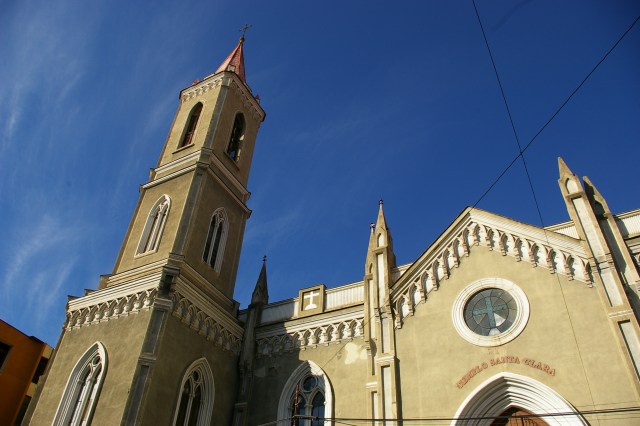Traveling to the city of Cochabamba in Bolivia provides you with many different opportunities to explore the heart of this fascinating country. There are many different sites that should be seen when visiting Cochabamba, so planning in advance is worth the effort. We truly enjoyed our time there and we hired a guide to take us to see some of the locations that are outside of the city. Getting around in Bolivia is not always easy as the roads are often in a constant state of repair and the heavy rains often create landslides that take out portions of the roads. Although you don’t have to do everything on this list to enjoy your time in Cochabamba, we’d certainly recommend at least getting out and doing at least one that is not located in the city itself.

The Ruins of Incallatja – One of the tours that took while we were in Cochabamba, Bolivia, was to the ruins at Incallajta. They are some of the most well-preserved ruins in Bolivia and it really gives you a sense of how great the Incan civilization was. Sadly, not a lot is known for sure about the site and it seems that it is not often visited by tourists. The main temple building is massive and is probably an indication as to how important the site was to the Incan empire. In addition to being a ceremonial site, it was also the easternmost defensive fortification for the Inca, with a large wall to protect them from the rival tribes in the Amazon.
Polacio Portales – We would definitely recommend taking a tour of the Palacio Portales. Not only is the building architecturally interesting, but the gardens, which were modeled after those at Versailles, are quite beautiful as well. Built by the wealthy millionaire Simon Patino, the palace was completed in 1927. Patino’s fortune was built by owning the majority of the tin industry in Bolivia, which earned the nicknames of “The Tin Baron” and “The Andean Rockefeller”. At one point, he was considered to be one of the five wealthiest people in the world.
Carrasco National Park – One of the most interesting places that we visited during our time in Bolivia was to the Carrasco National Park. It is in the Amazon Rainforest and is most famous for having a cave with Guacharo birds. These birds are virtually blind and are nocturnal feeders that eat the fruit of the oil palm trees. They are also known as “blind birds” or “oil birds” because of their unique eating habits as they are the only nocturnal fruit eating birds in the world that fly. Needless to say, there are a lot of other animals that can be found in the park and hiking through the park provides a variety of unique experiences. In addition to hiking in the park, we also stayed in an ecolodge as well as ziplined through the canopy.
Cristo de la Concordia – One of the first things that we did upon our arrival in Cochabamba was to visit the Cristo de la Concordia, which is a statue of Jesus Christ. The statue sits on top of San Pedro Hill and is accessible by a cable car or you can walk the 2,000 steps to the statue if you prefer. The statue is quite interesting, but since San Pedro Hill is almost 900 feet (265 meters) above the city of Cochabamba, the views are worth the visit as well.
Pico Tunari – Although we didn’t do this hike during our visit, our guide Remy shared the information with us and it would definitely be on our list when we visit again. Hiking to the summit of Pico Tunari, the highest point in Cochabamba, is certainly something that will provide striking views of the area. Bolivia has one of the most stable mountain outdoor weather in the world, making it a great place for mountain trekking.





Visiting Cochabamba provides the opportunity to see so many amazing places. Just walking around the city is wonderful, the people are extremely friendly, and the food is quite delicious. We stayed at a very nice hotel during our visit and enjoyed waking up to several families of parrots in the trees on the grounds. From Cochabamba, we traveled to La Paz, the capital of Bolivia, to continue our exploration of the country.







































